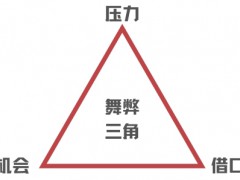• 沙特阿拉伯和阿联酋正在引领中东地区的氢气供应
• 随着沙特阿拉伯和阿联酋相继宣布新的氢气燃料项目,很明显,两国希望击败欧洲,成为最大的氢气燃料生产国
• 阿曼也希望成为全球一个主要的氢气生产国和出口国
据美国油价网报道,随着2021年中东地区国家接连宣布宏伟的氢能源计划,世界上一些主要能源生产国似乎正在为分得一块氢能源的蛋糕而你争我夺。沙特阿拉伯和阿联酋都宣布了未来10年对蓝色氢气和绿色氢气生产的重大投资,希望击败欧洲成为世界上最大的氢气燃料生产国。 日前,法国的Engie和总部位于阿布扎比的可再生能源企业马斯达尔能源公司宣布,计划投资50亿美元发展阿联酋的绿色氢气工业。 关于项目开发的细节还没有透露,但两家公司希望在2030年前建成2吉瓦电解槽产能的项目。这个项目旨在为海湾合作委员会(GCC)开发一个吉瓦规模的绿色氢气中心,这将有助于加速GCC成员国的经济脱碳。
两家公司表示,新的氢气项目“最初将以本地供应为目标,目标是扩大产能,为GCC建立一个吉瓦规模的绿色氢气中心,这个绿色氢气中心具有出口到世界其他市场的潜力”。
2021年5月,迪拜启动了本地区“首个工业规模”的绿色氢气工厂。这个项目由德国西门子公司运营,将使用巨大的穆罕默德·本·拉希德·阿勒马克图姆太阳能公园的电力,预计到2030年前,该太阳能公园的产能将达到5000兆瓦。
在2021年11月份举行的COP26气候峰会上,阿联酋披露了其通过“氢领导路线图”在2030年前在全球低碳氢气市场中占据25%份额的目标。 阿联酋希望在未来十年内成为全球主要的氢气出口国,特别是把重点放在欧洲和东亚市场上,目前已有几个氢气项目正在实施中。 阿布扎比国家石油公司(ADNOC)目前的氢气年产量超过30万吨,其目标为年产50万吨。
但阿联酋并不是唯一的一个希望领先国际竞争对手发展绿色氢气工业的中东国家。沙特阿拉伯已经在氢气项目上投入巨资,尽管沙特阿拉伯国家石油公司(沙特阿美)承认,蓝色氢气仍占主导地位,旨在使绿色氢气在经济上更可行,以期发展该行业。 这是沙特阿拉伯国家运输和物流战略的一部分,旨在到2030年前将该行业的非石油收入提高到120亿美元。
目前,沙特阿拉伯正在与邻国合作,沙特领先的发电和海水淡化厂开发商、投资者和运营商ACWA Power和阿曼石油公司和美国空气产品公司签署了一项价值70亿美元的协议,在阿曼的Salalah自由区生产绿色氢气。 作为沙特Neom开发项目的一部分,ACWA Power和美国空气产品公司已经在沙特阿拉伯红海海岸开发一个价值50亿美元的氢基氨厂。这个氢基氨厂预计每天生产650吨氢气。
通过区域协议,阿曼也希望成为全球一个主要的氢气生产国和出口国。 在2021年11月,当地官员宣布,阿曼希望到2040年前建立一个以氢气为中心的经济,绿色氢气和蓝色氢气将达到30吉瓦。 阿曼政府暗示不日将发布国家氢气战略。 此外,阿曼已经计划在2038年前建造世界上最大的氢气设施之一,工程施工将在2028年开始。 这些耗资300亿美元的工厂将由25吉瓦的风能和太阳能供电,目标是最终年产180万吨氢气。
阿曼石油开发公司能源更新部门负责人Abullah al Abri表示:“清洁氢气——包括绿色氢气和蓝色氢气——到2025年约为1吉瓦,到2030年前约为10吉瓦,到2040年前约为30吉瓦——这就是我们对阿曼氢气产量增长的看法。”
由于绿色竞赛加剧,中东能源生产国希望能在氢气生产方面与欧洲竞争。阿联酋和沙特阿拉伯的巨额投资预计将与欧洲各地类似的发展形成竞争。就在2021年12月份,西班牙电力公司伊维尔德罗拉和瑞典钢铁公司H2 Green Steel宣布合作开发一个26亿美元的绿色氢气设施。 这个绿色氢气设施位于欧洲西南部伊比利亚半岛,预计将在2025/2026年开始运营。
然而,并不是所有的氢气都是平等的,虽然欧洲在灰色氢气/蓝色氢气(来自化石燃料生产)的生产方面处于领先地位,但在发展绿色氢气工业方面仍有很长的路要走。 但是,与蓝色氢气和灰色氢气的替代品相比,生产绿色氢气的成本较高,这仍然是一个限制因素。在能源巨头应对这一挑战的同时,时间将告诉我们,哪个国家能够通过大量的前期投资,最快地发展其绿色氢气燃料行业,成为最大的燃料生产商和出口商。
李峻 编译自 美国油价网
原文如下:
Middle East Oil Giants Are Battling For Hydrogen Supremacy
· Saudi Arabia and the UAE are leading the charge for hydrogen in the Middle East.
· With both countries making announcement after announcement of new hydrogen projects, it’s clear that they are looking to beat Europe to become the largest producers of the fuel.
· Oman is also hoping to become a major hydrogen producer and exporter.
With announcement after announcement of grand hydrogen plans across the Middle East over the last year, it seems some of the world’s major energy-producing states are battling it out for a piece of the hydrogen pie. Saudi Arabia and the UAE have both revealed major investments in blue and green hydrogen production for the next decade, hoping to beat Europe to become the biggest producers of the fuel. Last week, France’s Engie and Abu Dhabi-based renewable energy business Masdar announced plans to invest $5 billion in the development of the UAE’s green hydrogen industry. Few details have been provided around the development, but the two companies hope to establish projects with an electrolyzer capacity of 2 gigawatts by 2030. The project is aimed at developing a giga-scale green hydrogen hub for the Gulf Cooperation Council (GCC), which could help accelerate the decarbonization of the economy.
The two firms stated that the new hydrogen projects will “initially target local supply, with the aim of expanding capacity to create a giga-scale green hydrogen hub for the GCC, with the potential to export to other markets.”
In May this year, Dubai launched the region’s ‘first industrial scale’ green hydrogen plant. Operated by Siemens, the project will use energy from the enormous Mohammed bin Rashid Al Maktoum Solar Park, which is expected to achieve a production capacity of 5,000 megawatts by 2030.
In the November COP26 summit, the UAE revealed aims for a 25 percent share of the global low-carbon hydrogen market by 2030 through its ‘hydrogen leadership roadmap’. The country hopes to become a leading hydrogen exporter over the next decade, particularly focusing on the Europe and East Asia markets, with several projects already underway. The Abu Dhabi National Oil Co. (ADNOC) currently produces over 300,000 mt/year of hydrogen, with targets of 500,000 mt/year.
But it’s not the only Middle Eastern country aiming to develop its green hydrogen industry ahead of international competitors. Saudi Arabia is already investing heavily in hydrogen projects, although state-owned energy firm ARAMCO admits that blue hydrogen still dominates, aiming to make green hydrogen more financially viable to grow the sector. This comes as part of the national transport and logistics strategy to boost annual non-oil revenues from the sector to $12 billion by 2030.
Saudi Arabia is working with neighboring countries as ACWA Power and Omanoil and Air Products sign a $7 billion agreement this week to produce green hydrogen in Oman’s Salalah free zone. ACWA Power and US-based Air Products are already developing a $5 billion hydrogen-based ammonia plant as part of the Neom development on the Red Sea coast of Saudi Arabia. The facility is expected to produce 650 tonnes of hydrogen every day.
Through regional agreements, Oman is also hoping to become a major hydrogen producer and exporter. In November, local officials announced that it hoped to establish a hydrogen-centric economy by 2040, with 30GW of green and blue hydrogen. The government has hinted at a national hydrogen strategy to be released before the end of the year. Further, Oman already has plans to construct one of the world’s largest hydrogen facilities by 2038, with works commencing in 2028. The $30 billion plants will be powered by 25 gigawatts of wind and solar energy, aiming for an eventual hydrogen output of 1.8 million tonnes per year.
Abullah al Abri, head of Energy Renewal at Petroleum Development Oman stated, “The potential for clean hydrogen, including the green and blue versions, is around 1GW by 2025, 10GW by 2030, and around 30GW by 2040 — this is how we see the growth of hydrogen in Oman.”
The Middle East energy-producing states hope to rival Europe in hydrogen production as the race to green hots up. Huge investments from the UAE and Saudi Arabia are expected to compete against similar developments across Europe. Just this month, Spanish power company Iberdrola and Sweden’s H2 Green Steel announced their partnership for the development of a $2.6 billion green hydrogen facility. To be situated on the Iberian Peninsula, the plant is expected to commence operations in 2025/26.
However, not all hydrogen is equal, and while Europe is leading in the production of grey/blue hydrogen, derived from fossil fuel production, it still has a long way to go in developing its green hydrogen industry. But the high cost of producing green hydrogen compared to blue and grey alternatives continues to be a limiting factor. While energy majors contend with this challenge, time will tell which country can develop its green hydrogen sector the fastest through heavy up-front investments to become the largest producer and exporter of the fuel.
免责声明:本网转载自其它媒体的文章,目的在于弘扬石化精神,传递更多石化信息,并不代表本网赞同其观点和对其真实性负责,在此我们谨向原作者和原媒体致以敬意。如果您认为本站文章侵犯了您的版权,请与我们联系,我们将第一时间删除。







